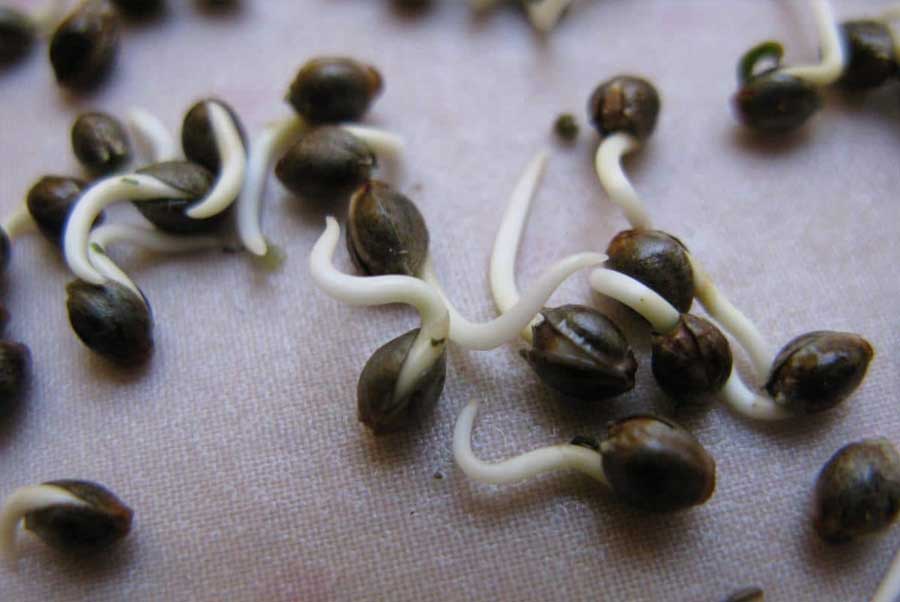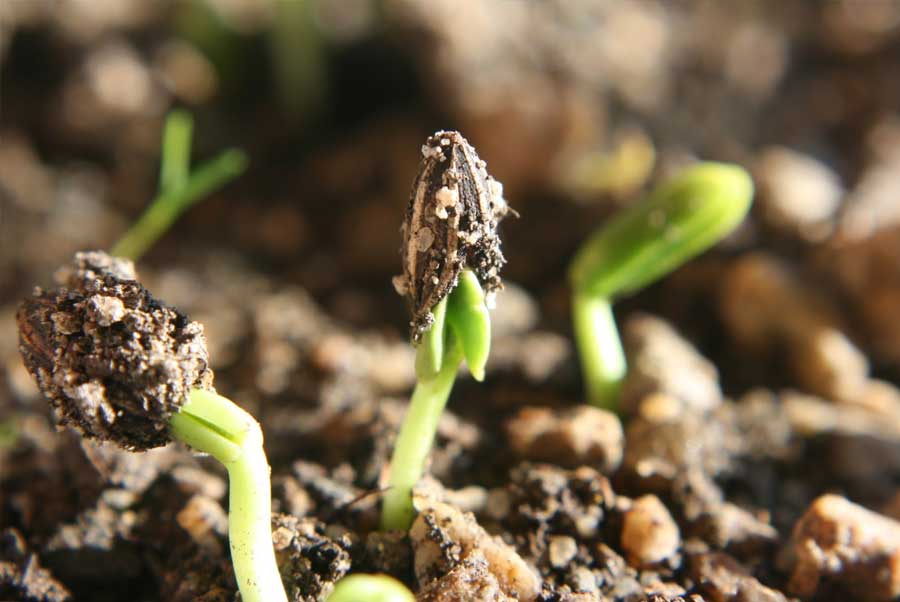Among the most critical stages in the growth of garden vegetables is seed germination. Germination is the process in which a seed grows into a new plant. There are a lot of variables that can come into play during seed germination, and in turn, a lot of things that can go wrong. Therefore, educating yourself on the important factors affecting this process can help ensure a successful garden.
Whether you’re using your own heirloom seeds or purchasing seeds from a garden store, germination is going to be highly dependent on environmental conditions. If you haven’t had luck germinating many of your seeds in the past, it could be due to light, warmth, moisture, or a variety of other issues. Here are some simple gardening tips for getting better, faster germination for all types of seeds.
Plants lie dormant until the seeds detect enough regular moisture to be able to grow. That is why many seeds take a long time to germinate. You can “trick” the seed into opening faster by pre-soaking them in water. The goal is to penetrate the outer surface of the shell so that the plant gets the signal that it’s ready to grow.
Make sure you are planting the seeds at the correct time of year for the region you live in for the best yield. Seed packets may have ideal planting times listed on the package, or you can check a seed planting calendar online.
If you’re failing to germinate seeds outside, starting them inside can help. Purchase a seed tray and plant a few seeds in each one. After your seedlings have grown, you can then move them outside to continue to develop. This protects your plants during their most vulnerable period, and lets you completely control the amount of water they get. In the early stages of growth, a single storm could wipe out your new plants!

There’s only one catch: if you start your seeds inside, you need to harden them before planting them outside. That means slowly acclimating them to an outdoor environment before being planted, starting with one or two hours outside a day. And remember, many plants are actually suitable to an indoor garden. Herbs and some vegetables can be grown quite happily inside or in pots — so you don’t necessarily need to move your plants outside.
Soil temperature sensors are ideal for growing seeds and seedlings to monitor soil conditions and make sure your plants stay within ideal temperatures, whether outside or indoors. Some indoor soil temperature sensors can also measure room temperature and humidity to provide even more information about growing conditions. Temperature is very important because the seed needs to “know” that the cold season is done and that it is time to grow. As much as they need moisture, seeds also need consistent warmth. Outside, this will usually be delivered by direct sunlight. Inside, you need to be able to control the temperature.
This also means that you will want to keep your seeds in a place that is naturally warm and well-lit. In the early days of your seedlings, they may not need much direct light — but they will still need some sunlight. You can also invest in UV lamps, which will have a dual purpose of both providing additional light for your seedlings and also making them warmer. Most seedlings prefer temperatures that are between 60 to 70 degrees. If you purchased a seed packet, it may state the ideal temperatures for the seed on the packet. Otherwise, you can check an online soil temperature chart for the seeds you are planting.
Once your seeds have been placed and you’ve started monitoring garden temperatures, you simply need to keep them well-watered until they germinate. Too little moisture and the seeds won’t germinate; too much moisture and they could actually begin to rot instead of developing. Some seeds simply take a long time to germinate to begin with. Lavender, for instance, can take anywhere from four to six weeks to germinate. During this time, resist the urge to try to check on the seeds or disturb the oil. Instead, just continue watering as needed and monitoring your sensors.
If your seeds have failed to germinate, even given the above tips, it is fully possible the seeds themselves were duds. If seeds weren’t stored properly — they could have been left in a hot mailbox, for instance — they may simply not be able to germinate. If seeds were stored in a very cold area, they may be taking some time to “wake” up. And there are some seeds that simply cannot germinate; many seeds that are culled from grocery store vegetables and herbs, for instance, are never going to be able to germinate.
On the other hand, if seeds from multiple sources are failing to germinate, you may need to look into either your soil or your water. Your potting soil may not have sufficient moisture absorption or drainage, or your water may need to be filtered. You may also be in an environment that is too cold for seeds to properly germinate, in which case you may need to invest in something to warm the soil.














